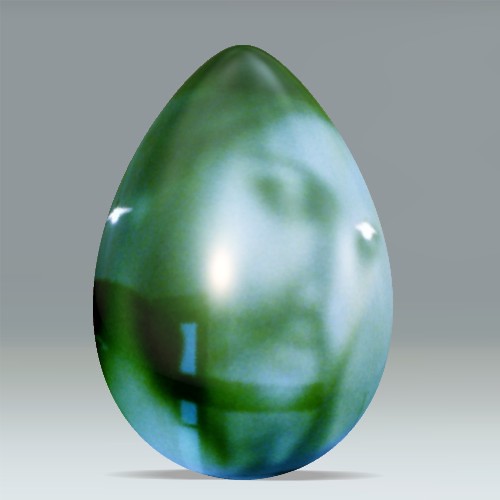What do nudism, vegans, rock, hyper-feminism, fine art and comics have in
common? The improbable answer is a pink girl with star-shaped freckles
called Innita, and her author/other half, No.
"No" is the legal name (legal surname "Para Innita") of a mysterious and
prolific artist dropping one amazing piece after another in a
variety of mediums/websites. A one woman army posting sometimes
several pieces a day, often digitally in places like flickr as well as oils in places like Bogotá.

The downside of No's outstanding creative output is that it leaves less time for curation, which means serialized books such as "De No para Innita vol. 1" lag a good two years behind the storyline and characters in the current drawn series. In any case, this is a good "origins" book and those bewitched by the visual work can start getting the coordinates of Innita's narrative in these two volumes available online at scribd.
By Innita's "origins" I mean something closer to those of the protestant revolution or the Dogma film movement than those of a Stan Lee character. She is rooted in a manifesto of principles more than
in a turtle-bit-me-so-now-I-have-x-ray-vision story.
The fundamental principle is roughly summarized as follows:
Feminine is best, reality is overrated. Reality shall be subverted and
replaced by art, not altered states, masculinity fully replaced, no
quarter. These ideas are expanded on page 192:
"Menorrealismo is an extreme artistic current; both classical and post-post-modern. This term comes from the amalgamation of the menorrhea (menstruation) and the word realism. Its significance determines that the essence of life is not reality (Spanish wordplay: “menorrhealism” as minor realism, lower realism),
but love[...]"
Based on this principle, the book covers three main narratives: Ginotropia

("gravitating towards the feminine"), interviews full of puns with Innita as a rocker, and the beginnings of "World War IV," a story line where the
vegan aspects of the hyper-feminine characters come clashing with the
world as we know it.
Incidentally, world war IV is fought between zombies and vegan female vampires. The origins of the conflict are World War III and the assassination of a female president. You'll just have to read it to make sense of it. If it seems twisted is because it is.
So much for description. Critically, I think its apt to describe what
sets this book apart, in terms of what it is not. Call it "That which No Innita is."
First of all, Innita is not your typical "hard rock chick,"
particularly not those presented in movies or comics. Those girls all suffer from one fatal flaw: inside all the hard exterior they are just a soft
goo of girly cliché. I personally believe that version of "hard women"
has been more detrimental to feminism than any broom or burka. No,
Innita is the genuine article, she is not waiting for the right guy to
knock her up and retire, she bleeds profusely and makes no apologies.
The next thing it isn't is "the first Colombian X." Whatever X
might be, those are not the right terms. The work is
highly innovative and there is no precedent I know of in Colombia, but
this is not some provincial figure with a bag of coffee under the arm
sold under the self-deprecation of exoticism. No/Innita is
an original playing by her own right on the big leagues, and asks for
no special treatment.
The girls on this book are not hot naked chicks derivative
of Milo Manara or superhero chicks a-la J. Scott Campbell "Danger Girl."
The accessible style borrows from comics as it does from other popular
illustrative art, such as the nouveau pieces of Mucha and
Lautrec. It contains traces and references to Klimt and Shiele, but
it all amounts not to a pastiche but to a distinctive visceral style
that is only No's.
By continuation of the previous argument, this book isn't really a
comic, (and I don't mean as opposed to a graphic novel) It is
fine art masquerading as illustration masquerading as comic book. In
this sense (but also in style and theme) the closest parallel I can
draw to No's work is that of the incredible Ashley Wood. In many ways
reading "De No para Innita vol. 1" is a pleasure similar to reading
Popbot.
Come to think of it, a mashup between Lady Sham, super agent Biatch
vs. Innita, would definitely be a fine art exhibit, er, comic book
worth seeing.
Fabio Arciniegas A., San Diego, California July 09, 2011
"De No Para Innita vol 1. and 2" is available on scribd,
Current works by No in the world of Innita available on flickr
Original Oils and Pencils available.

